Greg Cosell's Look Ahead: Patriots creativity with Rob Gronkowski makes offense click
New England Patriots coach Bill Belichick believes the tight end is critical for his offense.
The Patriots put a lot of emphasis on the tight end position. When you watch them you’ll see more formation diversity with the tight ends than you’ll see from any other NFL team.
When I watch the Patriots the past couple weeks, now that Rob Gronkowski is healthy and can be used to his full capability with offseason acquisition Martellus Bennett, I am reminded of Bill Belichick’s quote to Sports Illustrated’s Andy Benoit earlier this year about tight ends in his offense:
“The tight end position is, probably after quarterback, the hardest position to play in our offense,” Belichick told SI. “That’s the guy who does all the formationing. The running back is usually in the backfield. The receivers are receivers. But the tight ends could be in their tight end location, they could be in the backfield, they could be flexed. They could be in the wide position. To formation the defense, those are the guys you’re going to move. It’s moving the tight ends that changes the defensive deployment.”
That gives you a glimpse into what the Patriots want to do on offense. It helps when you have players as talented as Gronkowski and Bennett, who are both skilled enough to be chess pieces in the scheme. The days of lining up a tight end at the end of the offensive line every play are long gone, but the Patriots take tight end flexibility to a different level. They are masterful at changing the entire defense against them based on how they line up Gronkowski and Bennett.
A play in the fourth quarter last week against the Cincinnati Bengals was a great example of how the formation with their tight ends creates the matchup the Patriots want. Out of 12 personnel (one back, two tight ends), the Patriots had a closed formation with no receivers wide to Tom Brady’s right. Gronkowski’s vertical release from the inside tight end position (Bennett was outside of him) got him on safety Shawn Williams. Gronkowski ran a great route, widening his stem and getting Williams to expand and commit, before taking the seam back inside. This was a 29-yard gain.
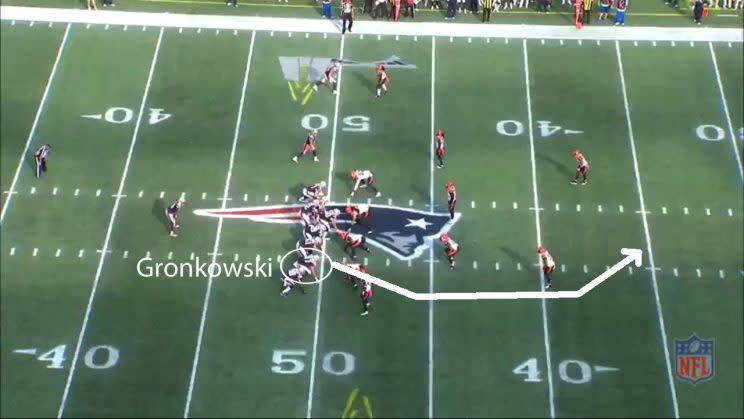
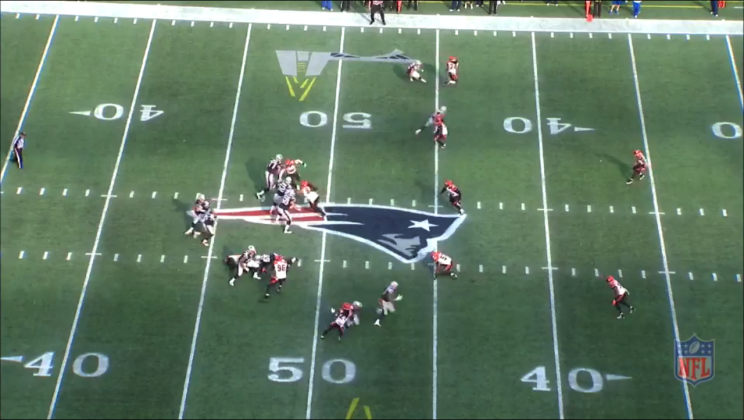
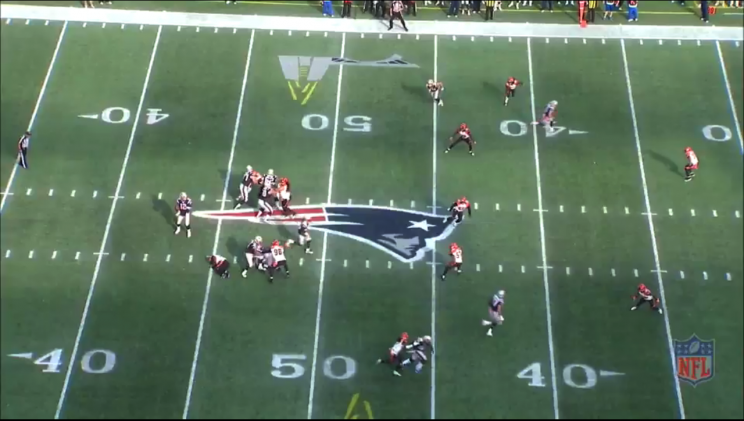
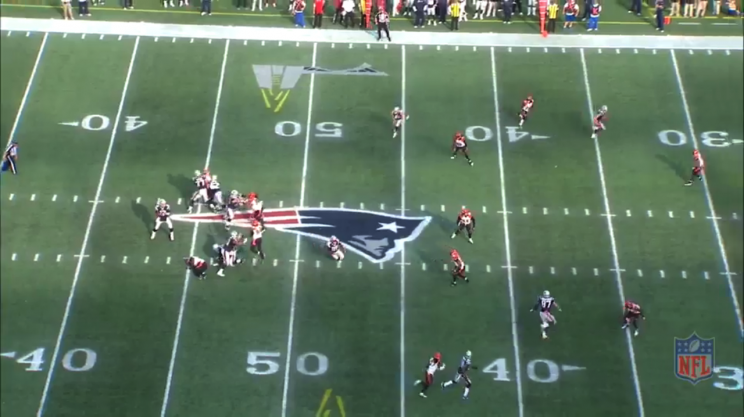
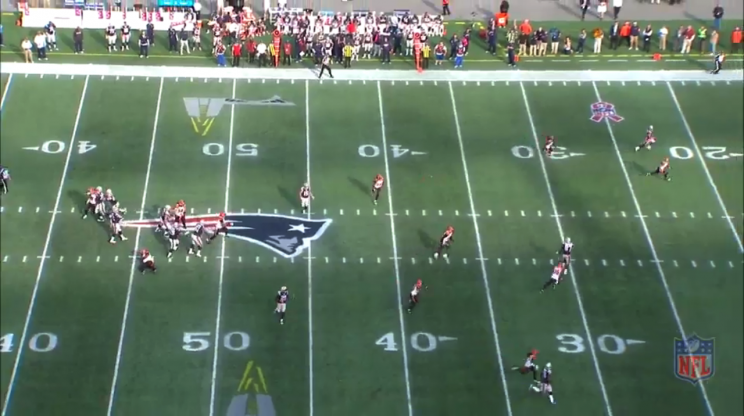
The Patriots also get the running back involved with the tight ends in route concepts, and a two-man route concept with running back James White and Gronkowski resulted in three touchdowns against the Bengals.
James White had a 15-yard touchdown late in the second quarter, and this is a great play design against the Bengals’ “quarters” zone coverage. Gronkowski was on the line of scrimmage and White was offset in the backfield. Gronkowski released vertically to attack cornerback Dre Kirkpatrick’s area of responsibility (he has the No. 1 vertical route), and White ran a flat route behind him. The Bengals essentially had to change to man-to-man coverage even though a zone was called. Kirkpatrick focused on Gronkowski, and linebacker Karlos Dansby had to work to the flat to cover White. Dansby couldn’t get there and it was an easy touchdown.
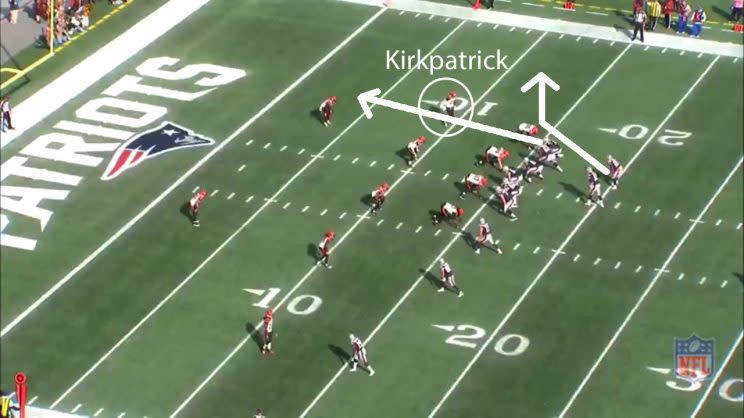

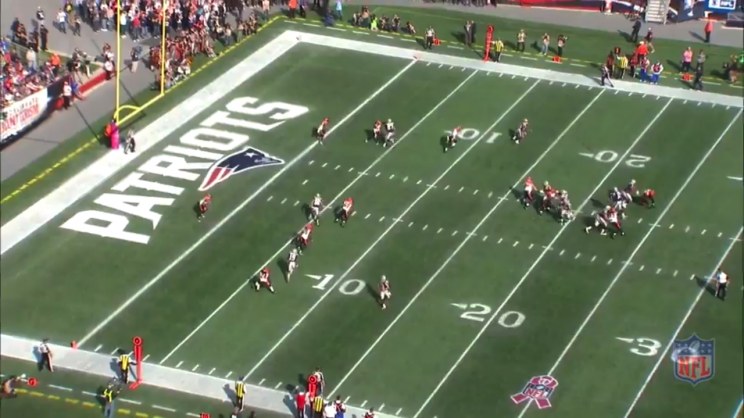
Here’s another look at how the play unfolded, from the end-zone angle. You can see how the formation and the route concept affected the defense:



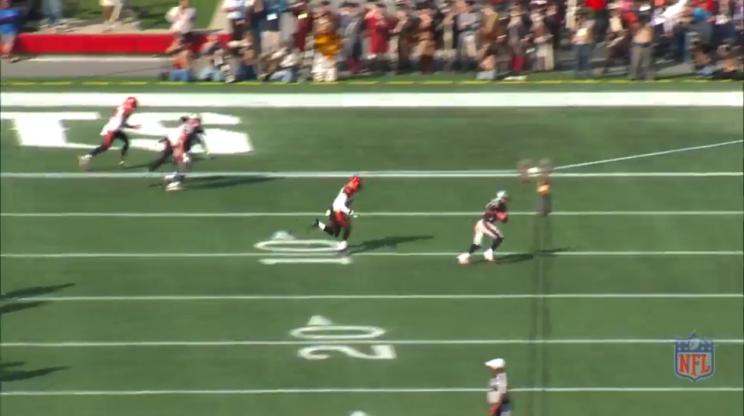
The Patriots went back to basically the same concept in the third quarter. Gronkowski released vertically and White released to the flat from an offset position. The Bengals were in “Cover 3” zone this time but the coverage responsibilities were similar. Kirkpatrick had Gronkowski and safety Williams (the flat defender) had White. The Bengals defended the flat route better, but Brady made a great throw to Gronkowski for the touchdown.



The same concept later in the third quarter resulted in White getting a 4-yard touchdown.




In two games this season Brady has completed 57 passes, including 12 to Gronkowski, 12 to White and 11 to Bennett. The key is the tight ends. The Patriots get very creative with them, moving them around the formation to dictate matchups. It’s one reason the Patriots’ offense is so hard to defend. The Pittsburgh Steelers will have to figure out how to match up against the tight ends in Sunday’s matchup.
Panthers coverage limitations
The Carolina Panthers are thin in the secondary, and last week they didn’t even bother using extra defensive backs. Against the New Orleans Saints, who threw 49 times, the Panthers didn’t play one snap of nickel defense with five defensive backs. All three of their linebackers played every snap.
That limited what defensive coordinator Sean McDermott could do schematically and tactically. The Panthers played almost entirely zone coverage, with a lot of two-shell coverages with two safeties deep – which makes sense with their limitations at cornerback. In the second half I don’t think they played one snap of man coverage until the Saints’ final drive. Linebacker Shaq Thompson matched up with receivers Brandin Cooks and Willie Snead in the slot on consecutive plays on that last drive.
With the Panthers thin in the secondary, it will be interesting to see what they decide to do going forward. Getting Thompson on the field more as a third linebacker makes sense if they want to use their best 11 players, but it limits what they can do defensively.
Elliott comparison
We’ve had six weeks to watch Dallas Cowboys running back Ezekiel Elliott, and the more I watch Elliott the more I see similarities to Terrell Davis when he was in Denver.
Elliott and Davis are more naturally smooth and fluid than shifty and elusive. Elliott has an easy change of direction that’s similar to Todd Gurley even though their body types are different and Gurley is a better overall runner. Elliott at times also at times has similar running style to DeAngelo Williams.
– – – – – – –
NFL analyst and NFL Films senior producer Greg Cosell watches as much NFL game film as anyone. Throughout the season, Cosell will join Shutdown Corner to share his observations on the teams, schemes and personnel from around the league.


